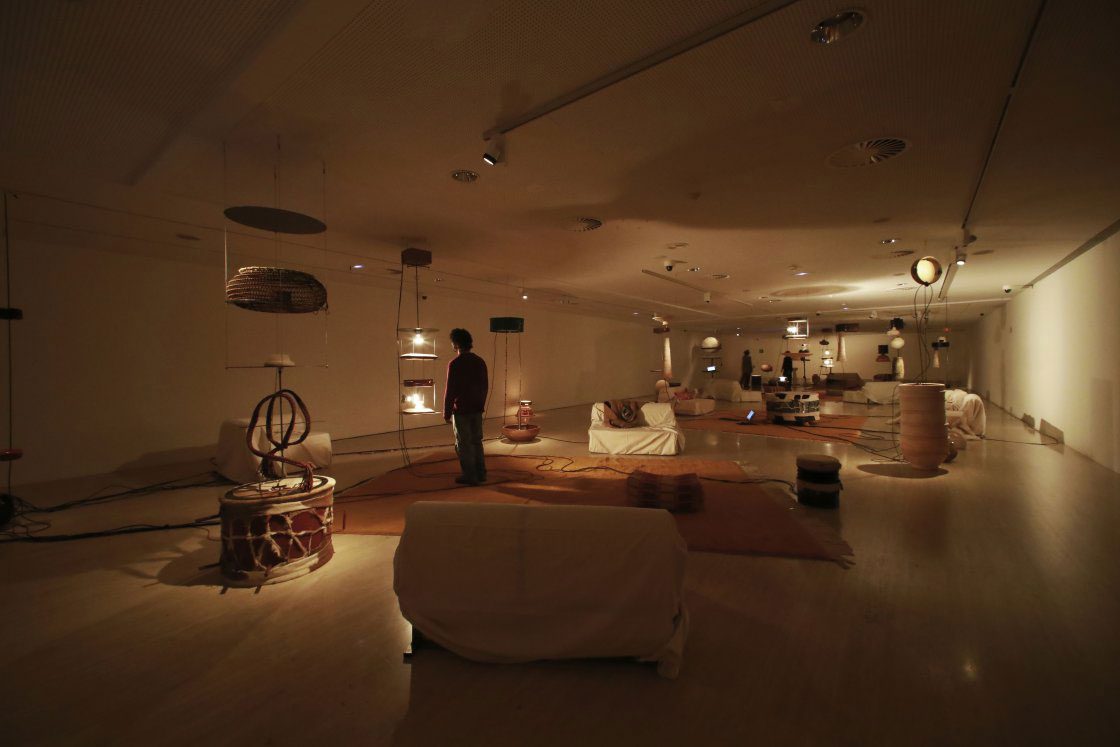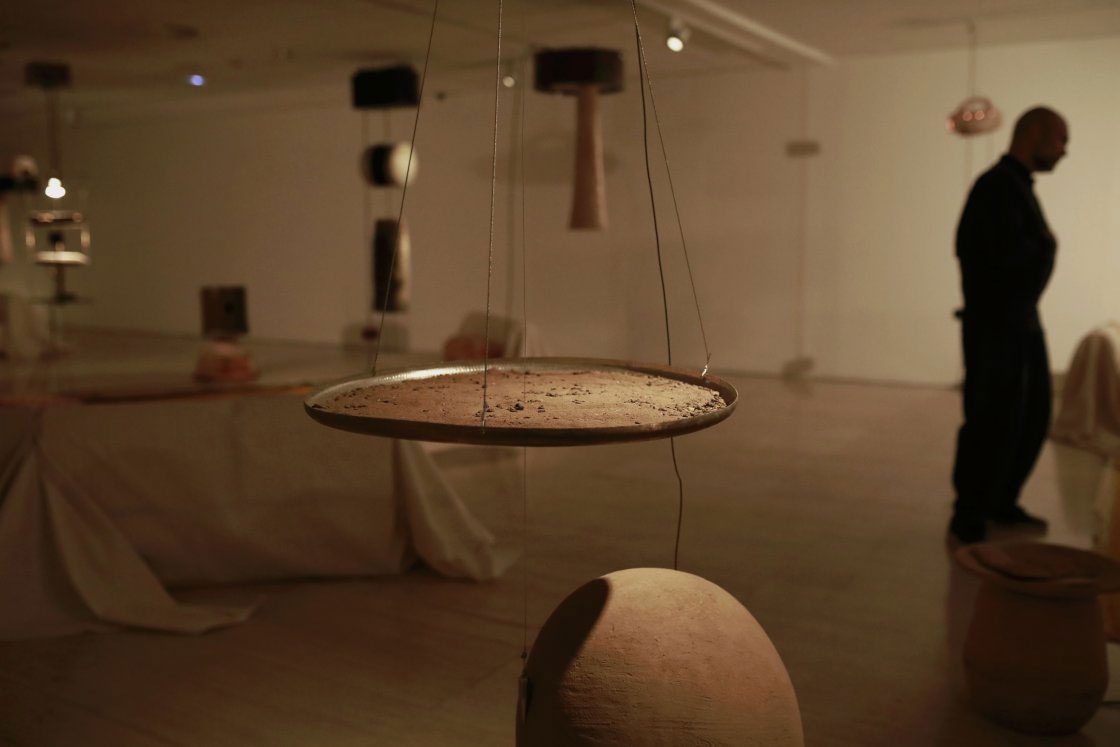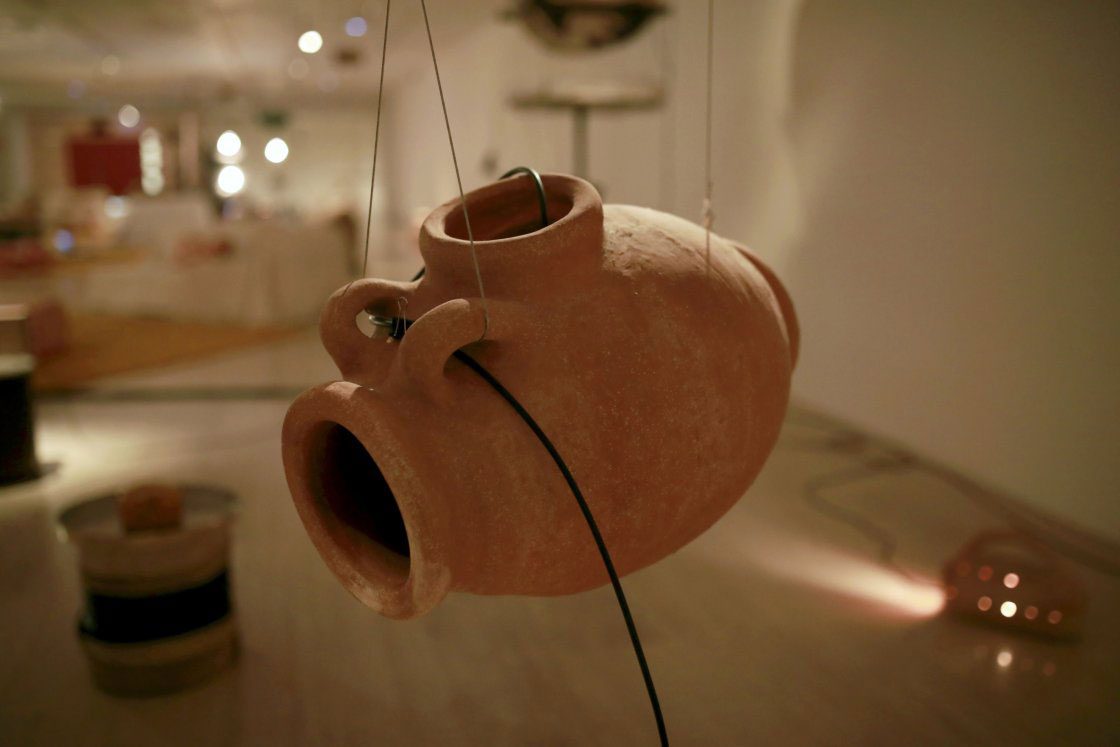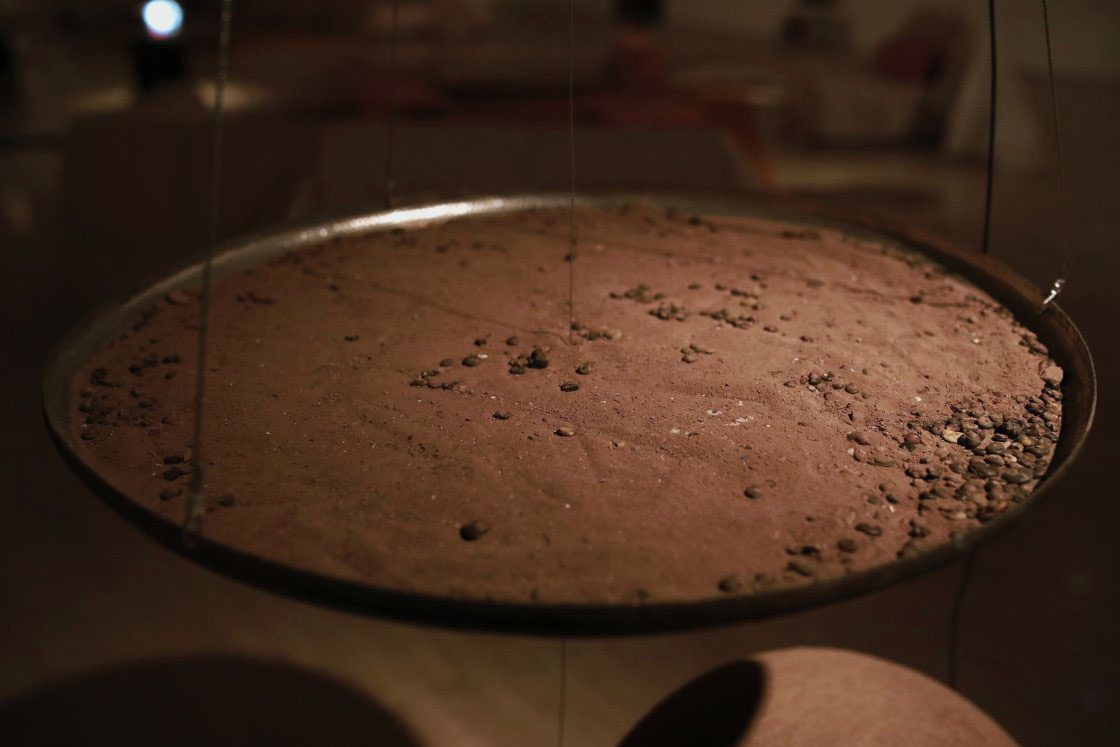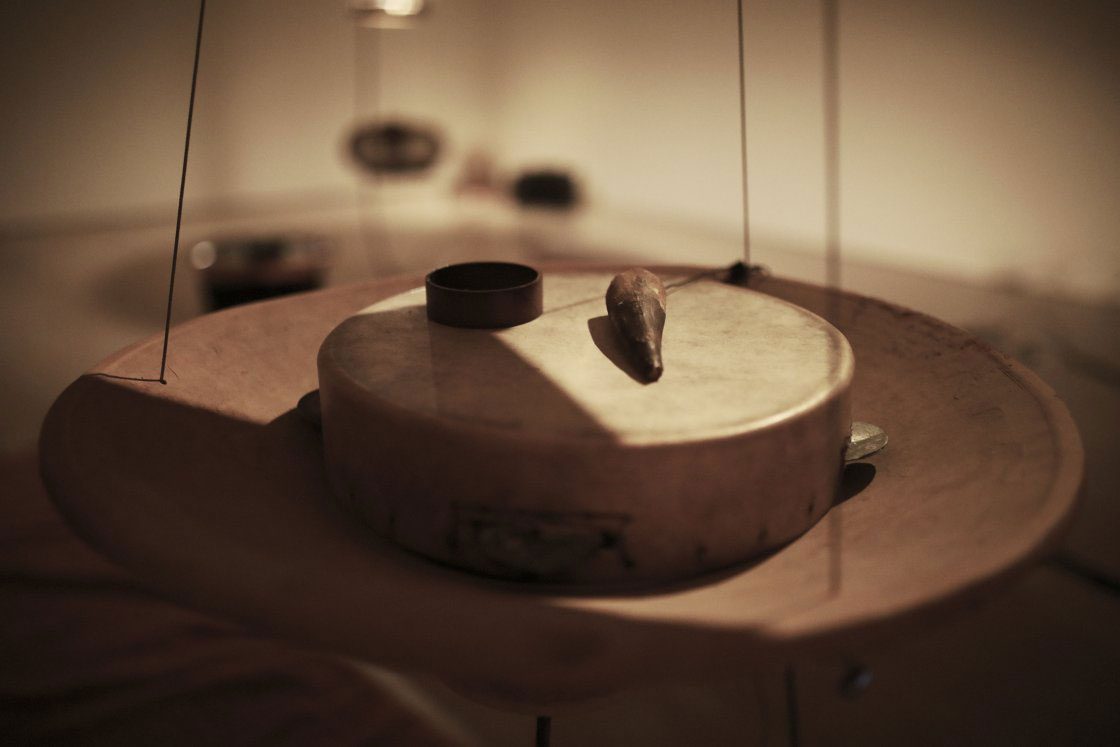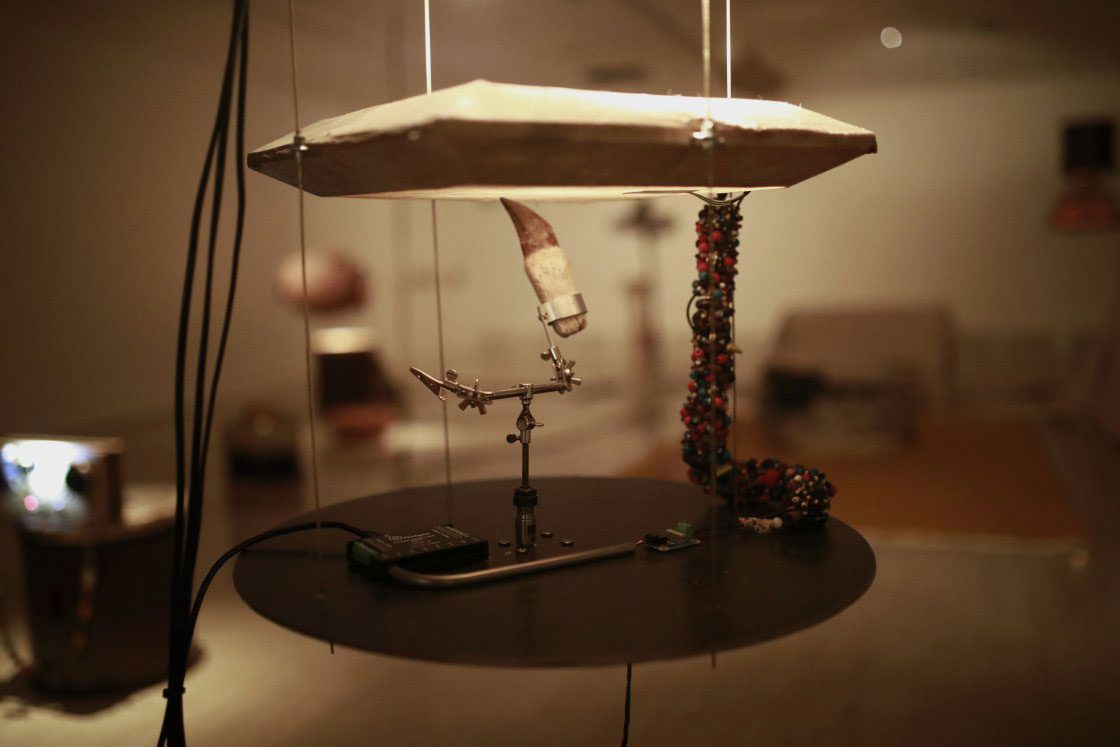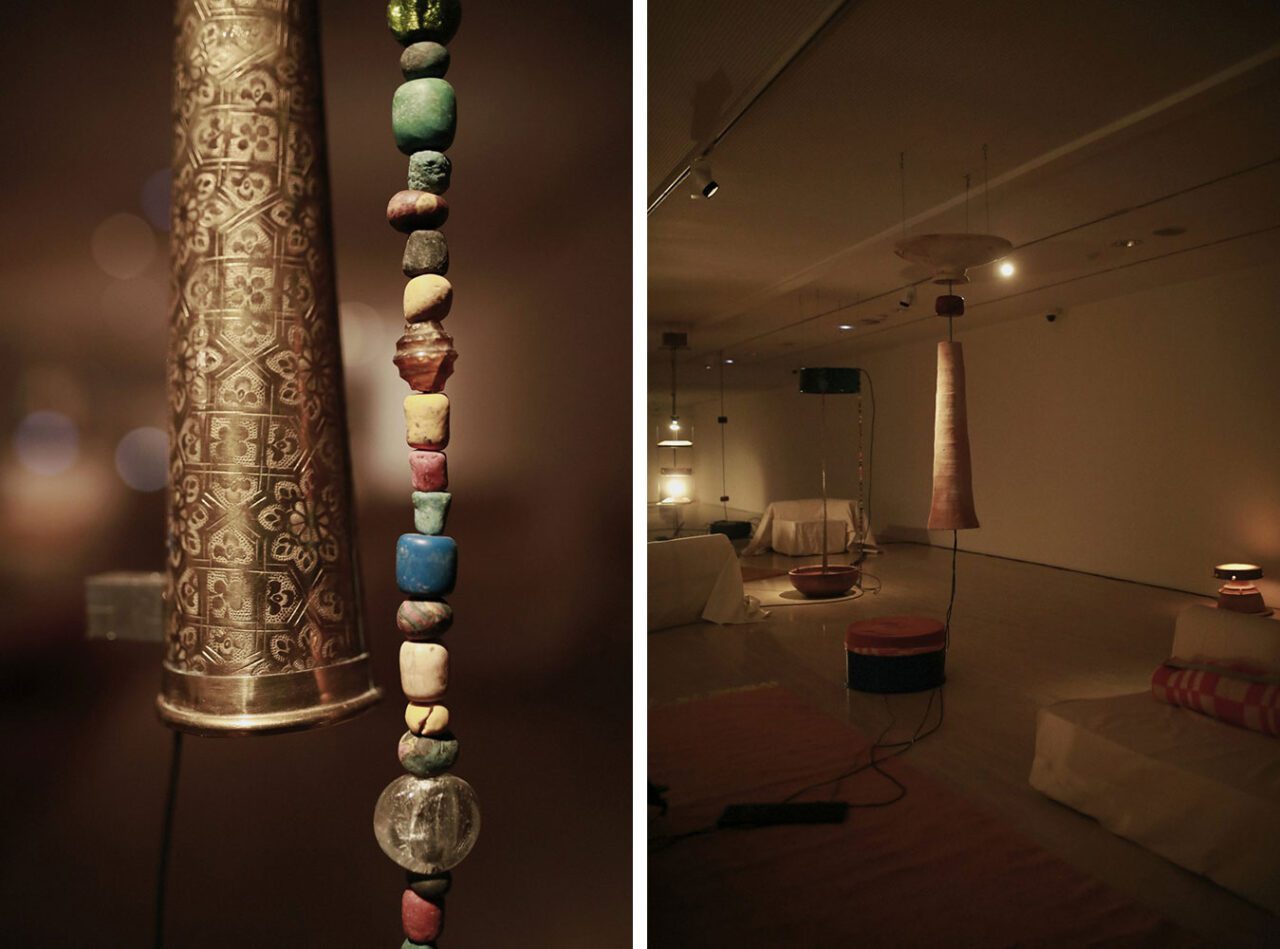PRESENTATION: Tarek Atoui, At-Tāriq
Tarek Atoui is a Franco-Lebanese artist and composer who lives and works in Paris. His artistic practice focuses on exploring the intersections of sound, technology, and culture, using instruments of his own design to create unique sonic experiences. Throughout his career, he has collaborated with a wide variety of artists and musicians, investigating the history of music and the sound traditions of diverse cultures.
By Efi Michalarou
Photo: Museo Nacional Thyssen-Bornemisza Archive
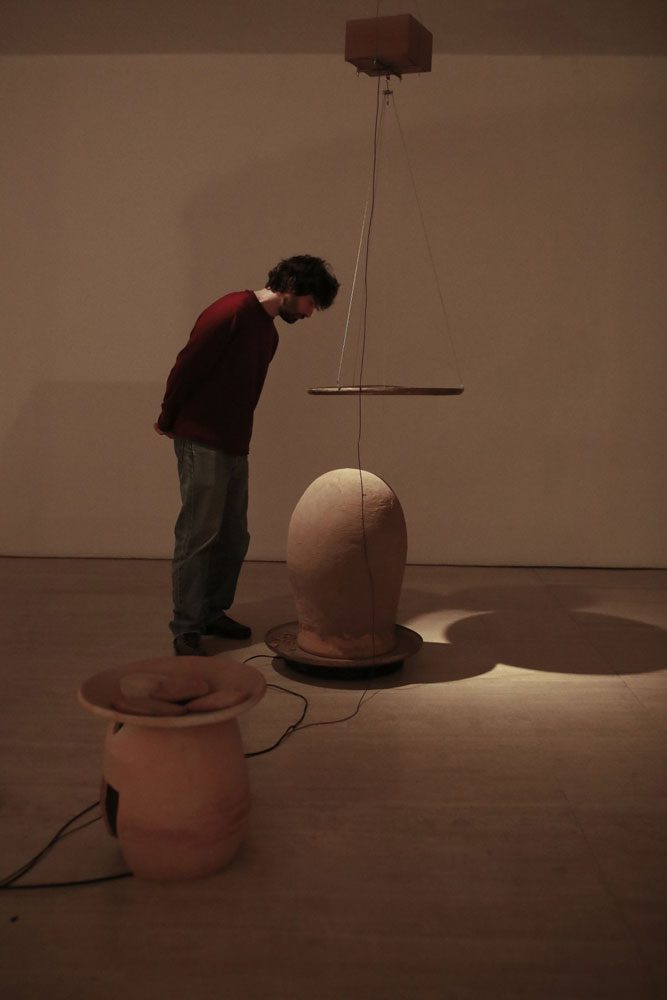
Tarek Atoui’s “At-Tāriq” is the result of a long-term research project: for over three years, the artist has followed the ancient routes of pilgrimage and trade that traverse North Africa, immersing himself in the musical, artisanal, and instrument-making traditions of the Arab World and the Tamazgha. The exhibition “At-Tāriq” (the morning star or the nightcomer) departs from the traditions of the Amazigh people (referred to as Berbers from a neocolonial perspective) to offer a deeper speculation on the notion of hospitality. Inspired by the night’s association with the unknown, At-Tāriq extends an invitation to engage with rural cultural and ecological legacies that resonate deeply in the contemporary world. Ultimately, the exhibition becomes a conduit for conversations about relationships, memory, identity, and the poetic act of listening. The show’s innovative format transforms the gallery of the Museo Nacional Thyssen- Bornemisza into five majlis, traditional spaces of hospitality and welcome in Arab and Eastern homes. Atoui reimagines and deconstructs these majlis into sound installations, immersive spaces for listening and resting.Amazigh music is profoundly connected to craft and shapes both the cultural identity and means of subsistence of the Atlas Mountains. Each of the five listening stations consists of traditional musical instruments made by artisans from the region, as well as commissioned ceramic, textile, or stone objects, as well as kinetic sculptures and sound devices created especially by the artist. Known for his experimental approach to music, Atoui amplifies the acoustic properties of bronze, textile, stone, ceramic, and other materials. The installation includes digital and analog instruments which the artist designed to perform the soundscape that can be heard throughout the exhibition. Tools like lasers, optical lenses, and tape loopers read sounds embedded in textiles, rocks, jewelry, and pottery. These objects vibrate, scrape surfaces, or move mechanically to rewrite this constantly mutating composition. The show includes a composition that grew out of an artistic residency. Atoui did exhaustive archival work, collecting recordings of concerts, poems, and songs of the Amazigh people. During a residency in Córdoba in 2023 he used that material for an experimental compositional session with three other musicians: Ziúr (Berlin), Susie Ibarra (New York/Berlin), and Nancy Mounir (Cairo). The result is a piece that blends traditional Amazigh and Arab music with electronic music and contemporary improvisation, which explores the interactions between rural music and innovations in sound. The composition was first premiered at a concert in Córdoba in 2023. In “At- Tāriq”, each listening station sonifies and performs one part of this soundscape. “The composition is heard at all five listening stations in At-Tāriq, but instead of playing on a multi-channel sound system like we’re used to, the drums, chairs, and kinetic ceiling sculptures make up the multi-channel system,” the artist explains. Atoui’s deeply personal passion for Arabic music was first harnessed in the project “Re-visiting Tarab” (2010–13). Centered on the concept of tarab, which denotes not only a specific repertoire of Arabic music but also the profound trance-like emotional state it evokes, this project became a collective exploration of that particular musically induced ecstasy. Variably described as “enchantment,” “aesthetic emotion,” or a “feeling roused by music,” tarab specifies the intense connection between audience and performer as experienced in a musical performance. While such interpersonal arousal through music might seem decidedly contemporary, the concept of tarab actually dates back at least to the ninth century, if not earlier. It connotes a kind of hearing with the “ear of the heart” most pronounced in Sufi mysticism. To listen well, that is, attentively and reverently, is itself an art form or a special gift. Whether intended to deepen awareness of the divine or else, in the secular context of the tarab, to seek aesthetic rapture (metaphorically to fall on one’s face), it persists as a profound introspective practice. Embodied in the exercise of sama’ (listening) and the figure of the sammi ‘ (the listener), such practice “underscores the symbolic importance of listening in Arab and Near-Eastern civilizations in general.” Atoui’s most recent research took him to the southeastern city of Ouarzazate in Morocco in early 2022, where he began to explore the region’s vibrant rural and Amazigh music traditions. Also referred to as Ahwach—a collective Amazigh traditional dance performance that is common in the High-Atlas and Anti-Atlas Mountains—it integrates songs, poetry, body movement, and percussion. More than just performance, Ahwach plays a fundamental role in Amazigh cultural heritage and its current revival. Its intricate musical and choral arrangements establish a shared ancestral vocabulary, nourished by rhythmic patterns, poetic inventions, and socio- cultural references, connecting communities through collective expression. Ahwach performances are woven into the fabric of daily life, taking place in streets, markets, private gatherings, and ceremonies. Beyond its aesthetic value, Ahwach also serves as a form of mnemonic technology, preserving cultural memory in a region that has long been a crossroads of diverse influences. At the same time, it reflects resilience in the face of enduring marginalization, embodying both the richness of Amazigh identity and the struggles of its preservation.
Photo: Tarek Atoui, At-Tāriq, Exhibition views Museo Nacional Thyssen-Bornemisza, Madrid-Spain, 2025. © TBA21 – Lourdes Cabrera
Info: Curator: Daniela Zyman, Museo Nacional Thyssen-Bornemisza, Paseo del Prado 8, Madrid, Spain, Duration: 18/2-18/5/2025, Days & Hours: Mon 12:00-16:00, Tue-Sun 10:00-19:00, www.museothyssen.org/
